
Excerpted from The City Beneath: A Century of Los Angeles Graffiti, by Susan A. Phillips (footnotes omitted). Copyright © 2019 Yale University Press. Distributed by University of Yale University Press. Excerpted by permission of Yale University Press. All rights reserved. No part of this excerpt may be reproduced or reprinted without permission in writing from the publisher.
INTRODUCTION
In a concrete tunnel along the Los Angeles River, a man with the initials JK wrote his name. He wrote Johnny K, Johnny Kook, Johnny Kap, Johnson Kraft, Johnny Kake, John Kristian. He wrote guns: Jorgenson Krag 30/40, Garand 30-60, Karbine 30, Kolt 45, M16, and .22. He wrote place-names: the Straits of Suez, the Dardanelles, Gibraltar, and Panama. N.Y.C., Pittsburg, Boston, St. Louis, Finex. He wrote Green Rivers and West Ports, Mexico and Rebel Land. He wrote Brentwood Vet’s Home. He wrote Kon, Ex Kon, and Ex Ex Kon, always replacing first C‘s with K‘s. He dated most of his work from midcentury—JK 1945, JK 1947, JK 1951, and JK 1952—and some earlier: JK 1914, JK 1925.
JK’s lists, carved in concrete at various depths, offer a cryptic Americana:
4 Leaf Klover
Stay Out of Jail
Roosvelt
Journeyman
Washington
KPTL
I’m sure someone in Los Angeles remembers JK. Some kid who spent a lot of time on the river used to say hi to him. Somebody was his cellmate or in his squadron. Somewhere, a retired psychiatrist from the Brentwood Veteran’s Hospital remembers a man obsessed with his own initials. His tunnel is filled with notes from underground:
Trucks, Autos, Mail, Milk + Bread, Ships, Jobs, Paintings, Airplanes, Postage,
Armaments, Shoes, Kar, Klot, Klassics, Kulture, Steel Mills, Munitions, Shelter,
Marches, Bottles, Factories, Movies, Need a Wife?, Husband?, Music + Stories,
Historical Konstructions
JK’s lists echo all over the city. Graffiti has a way of distilling narratives to their barest elements. Authors have a tendency to disappear.
For the past hundred years, an alternative written record has been tied to L.A.’s built environment. The infrastructure of railroads, bridges, storm drain tunnels, harbors, and rivers has sheltered discrete but overlapping communities that send messages stone on stone, as JK would say. This vernacular history is inscribed mostly on concrete with rocks, chalk, charcoal, pencil, spray paint, and sometimes railroad tar. It is a chronology of presence—mostly names and dates. Some of it has been preserved due
to flukes of infrastructural design. Other, older marks survive because their writers found odd places that were protected from the elements and were out of reach.
This book offers a vision of the city from below, where authors have constructed a fragile ecology of writing dating back a century. If the places are forsaken, the writers are just as marginal. They are transient, ethnic minorities, or queer. They are the subject of police sweeps and witch hunts. They are isolated through labor practices, enlistment, or imprisonment. They are labeled degenerate, vagrant, and subversive. Sometimes they’re racist, anti-Semitic, misogynistic, or homophobic. They are mostly men.
It has taken me over twenty-five years to collect the images and stories for this book. Gang graffiti of the 1990s paved my way to these materials, but it took me nearly a decade to learn to see older marks. Once I began to look in the right places and at a smaller scale, I noticed that historic writings were everywhere and fast disappearing. I realize I was following in the footsteps of Nancy Macdonald—a woman doing research about an overwhelmingly male pursuit. Women and girls do appear in this treatment, but graffiti means something different to them. While men and boys use graffiti in part to define their masculinity across multiple contexts and in circumstances of communal male isolation, women and girls write graffiti to escape the constraints of domesticity and gendered expectations of behavior. Queer graffiti is something else entirely, wherein people use the walls to escape gendered norms and the suppression of alternative sexual identities.
Most of L.A.’s graffiti history has been destroyed in the past thirty years. The explosion of New York–inspired graffiti, street art, city-sponsored erasure campaigns, bridge restructuring, and river redevelopment have diminished the bits of old writing that remain. My work has been like semiotic triage: to seek out what is left, photograph it, interpret it, and be content with partial knowledge. Meanwhile, the material grows more distant, the people fewer in number, and the messages lost.
This book is an attempt to curate what is left, to invite people to be part of that curation, to build context, and to tell a new history of Los Angeles through the lens of graffiti. This attempt is necessary for several reasons. First, the attrition of these marks is at an all-time high, but graffiti-related contexts and stories remain within reach. Many writers or their direct descendants are still alive. Second, Los Angeles’ restructuring efforts around the L.A. River have caused shifting, like an urban plate tectonics. City authorities have destroyed older writing, and in doing so have sometimes pushed previously invisible writing to the surface, creating interlinked processes of destruction and production. Third, the heyday of street art is now. Massive application of paint on wall has covered older graffiti to the point of near-total invisibility.
Present discourses surrounding graffiti also need expansion. Twenty years of graffiti scholarship are largely based on forms of graffiti beginning in New York City circa 1970 and ending with street art in the 2010s, with a few nods to freights, gangs, and Kilroy. Books, articles, magazines, and websites treat the New York genre in-depth, though some academic work also investigates a wider breadth of material. Studies of graffiti in the ancient world have been resurgent within the past five years, leading to a deeper-time understanding of graffiti in early cities and its possible connections to the origins of writing.
Most of the work that I describe in this book sits outside contemporary treatments of graffiti and street art. Each community I address has created its own canon of conventions, aesthetics, and grammar, along with common media of production. Many of the marks documented in this book were written before the spray can was available, when people relied on pencil, charcoal, tar, chalk, rocks, railroad spikes, or whatever they happened to find on the ground as they went.
Nicolas Restif de la Bretonne, also known as “Le Griffon” (The Scribbler), inspired photographer Henri Brassaï’s conception of the graffiti “mania.” For Brassaï, the mania is addiction: constant repetition, inscription on a grand scale, compulsion. Le Griffon wrote and carved his name, factoids about his health, descriptions of his feelings, philosophical musings, and thoughts on the pain and hope of his love life. His oeuvre totaled hundreds of inscriptions that he produced on the streets of his Paris neighborhood over the course of a decade in the latter 1700s. Brassaï asserted that this is what people do because they “want to save themselves from the wreckage”: that people hold “fast to permanent materials as to a life buoy.” The graffiti mania allows people to combine materiality, personhood, and landscape. Several people in this book have the mania—JK, hobo A-No. 1, Chaka, many taggers or bombers, some gang members. The essence of graffiti captures some people, including at times researchers, and doesn’t let them go.
My analysis of a century of Los Angeles graffiti combines elements of ethnography, art history, urban history, ecology, and archaeology. The approach includes a focus on materiality, a contemplation of urban ruins, and a critical view of the city as an archive. The project’s method involves something I think of as uncovering rather than discovery. Uncovering is the opposite of a colonial project. It resists multiple layers of erasure by drawing attention to the destruction of neighborhoods, the whitewashing of people’s experiences, the promotion of patriarchy, the insularity of blue-collar labor, and the development and demise of subcultures. Uncovering drives a focus on unseen images and attempts to reconnect them with the people surrounding their original production. The process is a bit like reanimation. Words on a wall remain stagnant until people’s stories begin to inform their interpretation. Uncovering fuses ethnography and archaeology and embraces a sometimes-chaotic stratigraphy where names and keywords are invitations to engage in multiple fields across time.
The palimpsest, or intense layering, of a graffitied wall is difficult interpretive ground if one is focused on content and context rather than aesthetics. But even the palimpsest’s overlapping meanings become accessible via one of graffiti’s most powerful features: its tie of sympathy to the author. Graffiti scholar Rafael Schacter calls this a “tactile adhesiveness.” Graffiti acts indexically, like a fingerprint. Something in the medium recalls what Sir James Frazer termed “contagious magic”—the bond that remains between two formerly connected things. This tie creates temporal proximity between now-absent authors and present viewers in a way that collapses categories as well as concepts of time. The “here and now” that anthropologist Marc Augé says is so critical to the anthropological project feels different through graffiti’s lens: the producers are now missing, and the contexts folded into the city’s broader fabric. In searching for meaning, the experience of time gets cobbled together, like bricolage, or flattened into a collapsed past-present-future, like time travel.
Rather than adhering to the strict time marker of a century, my temporal focus is both longer and shorter than a hundred years. This book’s treatment falls primarily within what Eric Hobsbawm calls the “short twentieth century,” which runs from 1914 to 1991. Hobsbawm identifies the period between World War I and the fall of communism in Eastern Europe as an “age of extremes.” This period is witness to the failures of communism, imperialism, capitalism, and fascism, as well as to key reversals—heightened inequality, exaggerated consumption practices, the rise of youth culture. Augé terms this “supermodernity,” which he similarly defines as an age of excess, an acceleration of history, an overabundance. It may seem contradictory to reference a firm historical boundary like Hobsbawm’s while simultaneously embracing the difficulties of history and time in Augé’s supermodern era. Hobsbawm makes sense because of the way his time frame intermeshes with the material.
Along with the outbreak of World War I, the year 1914 witnessed the creation of some of the oldest surviving Los Angeles graffiti. It was also the moment that, according to historian Jared Orsi, Los Angeles first experienced itself as a city. The end date, 1991, is likewise significant. The dissolution of the Soviet Union shifted the punitive gaze in the United States to enemies within, spawned wars on gangs and graffiti, and generated critical interest in our swelling prison system. The 1992 Los Angeles uprising soon followed. These years saw the emergence of scholarly interest in graffiti and also provide a loose marker for the start of the digital age.
In 1994, Susan Ferrell founded Art Crimes, the first website dedicated to graffiti and one of the first websites on the Internet. Still publishing more than twenty years later, the site now faces in two directions—forward in the active website, and backward in a digital archive of its first two decades. The digital age transformed graffiti. The Internet allowed artists to circulate images globally on a mass scale, and cellular technology eventually provided the means for widespread self-documentation. Graffiti and street art have become international art movements. The scholarship that resulted is wide-ranging, but neither holistic nor complete. The global graffiti art movement often obscures local graffiti traditions due to its large size, its links to the art market, and its monopoly on scholarly attention. Graffiti first evolved in concert with urbanization and the development of writing in the ancient world. Today, scholars and practitioners are grappling with graffiti’s position within Western art traditions and the global circulation of images.
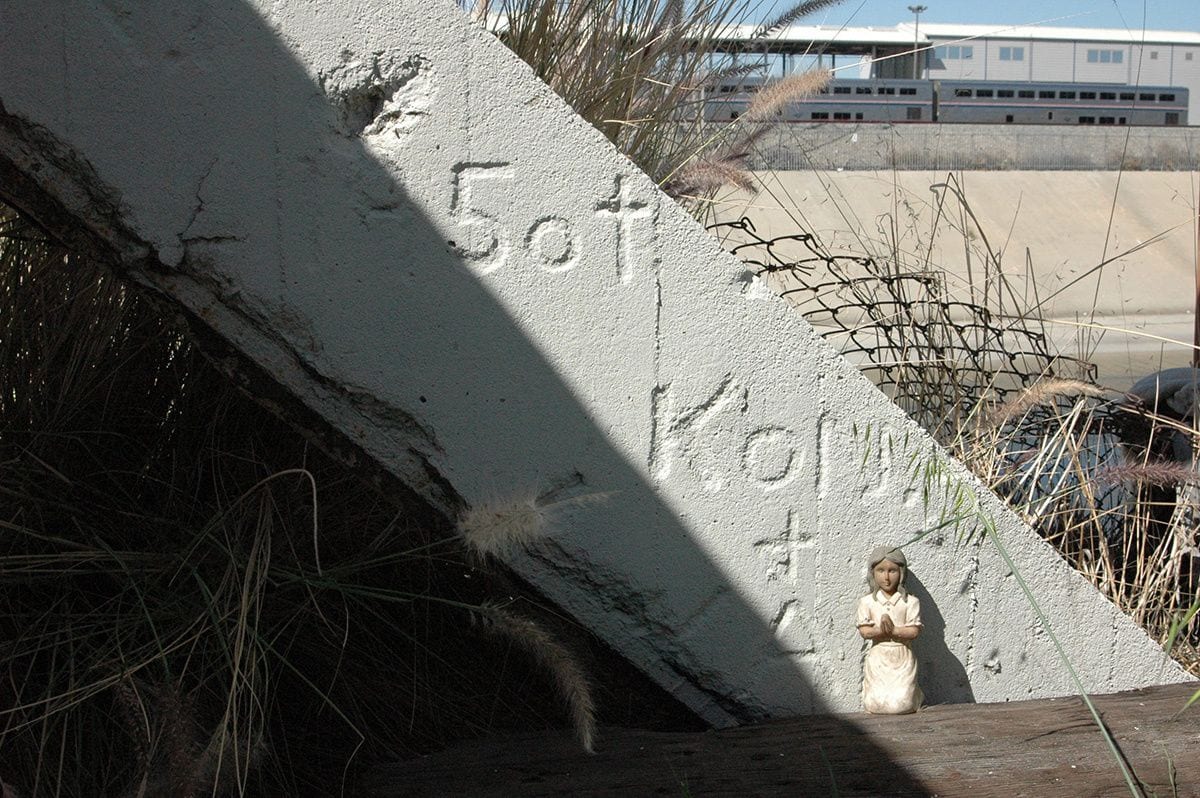
I have radically condensed the periods after 1991 in order to expand my treatment of lesser-known or unknown graffiti genres. Much of the book is from the pre-digital era. I began my ethnographic fieldwork with gangs and graffiti in 1990. Using my own start date as an approximate finish line prevented me from relying on a false sense of the ethnographic present and forced me to combine archaeological and ethnographic time, which archaeologist Shannon Lee Dawdy suggests might be critical to our understanding of ruins and multiple temporalities. I offer through graffiti a partial history, a hundred-year span in a two-hundred-year-old city where the earliest writers, or people who knew them, remain within reach. This short twentieth century is close enough temporally not to render its subjects as fetishes, and distanced enough to provide a cushion of deeper time for understanding the present and recent past. I have combined multiple disciplinary approaches to examine social context, to solicit narratives, to understand the ecology of the city and its built environment, and to investigate linkages between visual expression and cultural history. Instead of exploring the century as a series of decades, or attempting to analyze the material equally, I present the chapters in different ways, as the subject matter dictates. In the process I focus on the city’s complications, failures, and inequalities as well as on a key strength: its people.
The heart of this book resides in details that the most marginalized people leave behind. The texts I analyze are notes from the subaltern, the wanderers, the vilified, the vandals, the workers—from people who have broken the social contract of public space by actually inserting themselves into it. The richness of these alienated lives remains consistent, as people communicate, express themselves, and make connections with others. The fragility of that endeavor is mirrored in the graffiti medium. Fragility and richness work in tandem, and are testaments to the strength of community, to people’s irrepressible urge to decorate and be understood, and to graffiti’s flexibility as a means of expression available to individuals no matter how constrained, repressed, jailed, or isolated.
Ruined, “unimportant,” or overlooked areas where graffiti survives are critical to telling alternate Los Angeles histories. Urban infrastructural elements have been a form of protection for the messages they carry. Because it is often forsaken or isolated, city infrastructure can function as a true commons as opposed to city-sanctioned public space. Insularity or inaccessibility protects graffiti as a material object, as in the labor contexts of Hollywood, railroad work, or the harbor, or because ruined or hard-to-reach locations protect messages from view.
Anthropologist Vyjayanthi Rao sees the city as an archive—as active, nefarious, and process-oriented, rather than as a simplistic metaphor for understanding how layers of history accumulate. For Rao, palimpsest isn’t benign. It’s the physical manifestation of inequality. Seen in this way, even if infrastructure is in continual usage and structurally sound, it is already a ruin of capitalism, whose promises have failed, as well as a monument to those promises and failures.
On the 1927 Spring Street Bridge, bridge restructuring in 2014 reopened abutments that had been bricked shut sometime in the 1940s. It was the closest thing I’d experienced to entering a sealed graffiti tomb, with work dating from the bridge’s construction until the abutments’ closure. Contemporary graffiti writers already had begun to readorn the site by the time I documented it in 2015. I did not record it well enough on my first visit, returned to find the site closed, and then returned again to find newer graffiti on the next trip. Susan Crane says that we halt images’ in-situ temporal progression by documenting them, and that preservation or conservation efforts that attempt to “fix” objects compromise their own temporal process. This project has taught me to let go of my continual urge to protect the oldest materials, or somehow to have them exist in a museum. I now view graffiti as almost animate beings. They may be covered with layers of paint, but they still exist. Part of the stratigraphy of our city, graffiti reach depths I have sometimes been able to visit. But most remain unmeasured, and their presence is unchronicled. The city has absorbed the marks into its messy fabric.
Many key historical graffiti sites in Los Angeles follow the infrastructure of L.A.’s watershed. The book traces some of the urban development of Los Angeles and examines how the city came by its water, drawn from land to the north and put to work at the expense of our native waters. Similarly, Los Angeles has systematically exploited laborers and migrant workers and both vilified and concretized them in place. In doing so, the city made them a fixed part of the landscape while keeping them separate, like the L.A. River, or like natural creeks now buried underground.
Within overlapping histories of colonialism and imperialism, subordinate people have been simultaneously unwanted and essential to maintaining the status quo. Chinese immigrants who built the railroads in the mid-1800s were the targets of persistent racism, victims of the largest mass lynching in U.S. history (Los Angeles, 1871), and subject to acts of Congress to exclude Chinese people from the United States. Instead of hiring railroad laborers from Guangdong, China, Los Angeles now embraces goods from Guangdong at the harbor. This trade route across the Pacific is as much a part of Los Angeles history as the Portola Trail or El Camino Real.
Mobility in Los Angeles increased with technological and infrastructural development, and people took advantage of those benefits in different ways. Freight trains not only carried goods but also became focal points for at least four distinct groups of writers: hobos, railroad workers, migrants, and graffiti artists. Graffiti is a mode of community building and self-affirmation, a way to anchor wandering and to relieve oppression. The development of Los Angeles has been bound up with violence and exploitation. Graffiti’s placement alongside the infrastructure of L.A.’s development is an assertion of belonging within complex, often hostile circumstances.
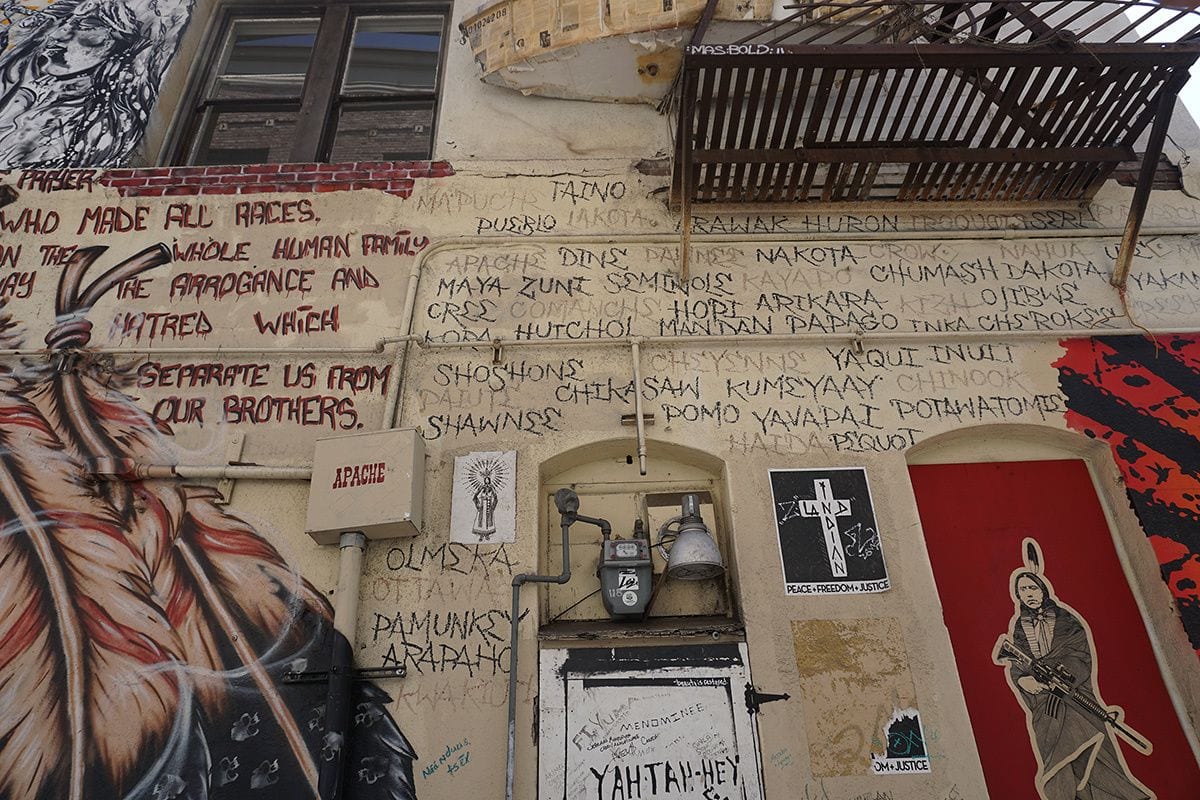
The privatization of land in Los Angeles began with different tribal entities: Tongva, Kizh, Tataviam, Chumash. Settler colonialism brought enslavement, disease, cultural erosion, and co-option of native California tribes into bands of Mission Indians that resulted in name changes: Gabrielino (or Gabrieleno), Fernandeño. Spanish Land Grant families—Lugo, Verdugo, Pico, Dominguez, Sepulveda, Machado, Figueroa— retained large swaths of land that were eventually sold to white settlers with names like Banning (harbor), Doheny (oil), or Huntington (transportation), all of whom built personal wealth from public projects. The gradual removal of land for development created public infrastructure that was also designed to protect private property.
Trespass is a rejection of the values embedded in private property and the accumulation of wealth. Graffiti is a key artifact of that rejection. I offer these concepts here as metaphors for state repression and intensified globalization, for erasure and compromised identities. In this short, Los Angeles, twentieth century, state violence and growing inequality have privileged the accumulation of wealth over the well-being of people, animals, and the environment. Street artist Jaque Fragua reminds us that Los Angeles is “Indian Land,” and to “Decolonize and Chill.” Debates about the merits of graffiti—whether it is art or crime, or whether it is or ought to be legal or illegal—are unproductive in the context of my telling. Vandalism has never been a good frame for understanding this material, which is about expression rather than destruction. As Rafael Schacter argues, graffiti is additive rather than reductive. Simplistic binaries have little meaning from the practitioner’s point of view.
This book is an experiment in asking what markings on walls can contribute to our understanding of a hundred-year stretch of history in a single city. For early hobos, tramping made trains, rivers, and bridges into unsanctioned common property. Many hobos adopted socialist and anarchist principles, the philosophy of which continues to echo on Skid Row today. Wealthy gay men in the 1920s and ’30s were able to use private property to create modest protection for themselves and other gay men. For the working class, private property did not protect alternative forms of sexual expression that were relegated to risky, marginal spaces through the 1960s. During segregation, young people created what could be thought of as a multiracial commons out of informal green space and city infrastructure. Prisoners at Manzanar wrote themselves and their discontent into a directly repressive landscape. Gang members throughout the city’s history have developed alternative forms of politics, economy, and creative expression directly tied to city blocks. Surfers reject the idea of workaday labor and have pursued a never-ending quest for perfection in wave and form. Hollywood grips and electricians transform the shells of ever-changing sets into repositories for a living history of their labor. Container ship sailors, who embark on global travel along with the goods they transport, use graffiti to extend their metaphorical anchor in ports of call. These are just some of the groups in this treatment, but all utilize the built environment, seen here as residue, relic, or artifact of the supermodern, to pursue their own agendas and strengthen their own communities. Rao is right: the built environment is an archive of inequality. But on the surface of that archive is a living skin that continues to stretch and change, where generations of people have created sometimes little-known ways of being.
The work of uncovering those ways of being sometimes replicates sensory relations with the built environment that recall the experiences of the original writers. My own methodological ethics of inclusion for the objects rarely sit well with rules surrounding legal access to spaces. Graffiti has led me to investigate, in occasionally unconventional ways, the foundations of Los Angeles infrastructure: the control of water, the movement of goods, the housing of people, the development of defense, and the production of images. In this book’s varied locations, graffiti has acted as a waypoint for people on a journey or as a form of claiming, allowing people to locate themselves and their cultures in place. Navigation and mobility are alternate forms of ownership that are not invested in private property. When mobility involves trespass and graffiti, authorities’ control over wall writing becomes a subtler, more insidious way of controlling a city.
As a city, Los Angeles is notable for its radically decentered aspect, its history of forgetting, and its nostalgia for the present. Embracing alternate temporalities that eschew modernist concepts of progress makes sense in a city with multiple centers. A definitive documentation has never been the goal—I know there’s more out there, and a lot I chose not to cover. The goal instead is to create an alternate vision of the city, a method for writing more inclusive histories, and a means of valuing devalued persons and the objects they produce. Graffiti analysis has allowed me to uncover people’s perseverance through negative histories of racism, repression, and exploitation. Graffiti flourishes in constrained, disrupted, or hostile circumstances. Its availability, immediacy, and, ultimately, illegality make it a flexible mode of expression—a resilient, baseline form of visual communication that crosscuts human history.
Throughout the treatment I catch glimpses of graffiti’s unadulterated presence, which appears and disappears as the writers do. Appearance and disappearance of truth, integration and disintegration of knowledge, and awareness of self and audience are core but unstable aspects of this medium. Graffiti challenges us to look for human expression almost beyond the realm of discernibility.
Graffiti recalls myth as Claude Lévi-Strauss described it, as distilled narratives where expression is pared down and then nested within a system of similar elements. There are no wasted words here. One name on a wall can communicate an entire social history. My job with this writing has been to unpack that history, to elucidate referents that may no longer be intuitive, to re-match names with the people behind them, and to tell their stories. I have tried to stay close to the walls and to the writers when I could find them. What I needed to know in order to understand the meaning of certain images charted the course of this research, with people and words as my guide. I stopped when those questions were answered, and I tried to avoid forms of interpretation that might otherwise violate graffiti’s condensed signatures, keywords, and place-names.
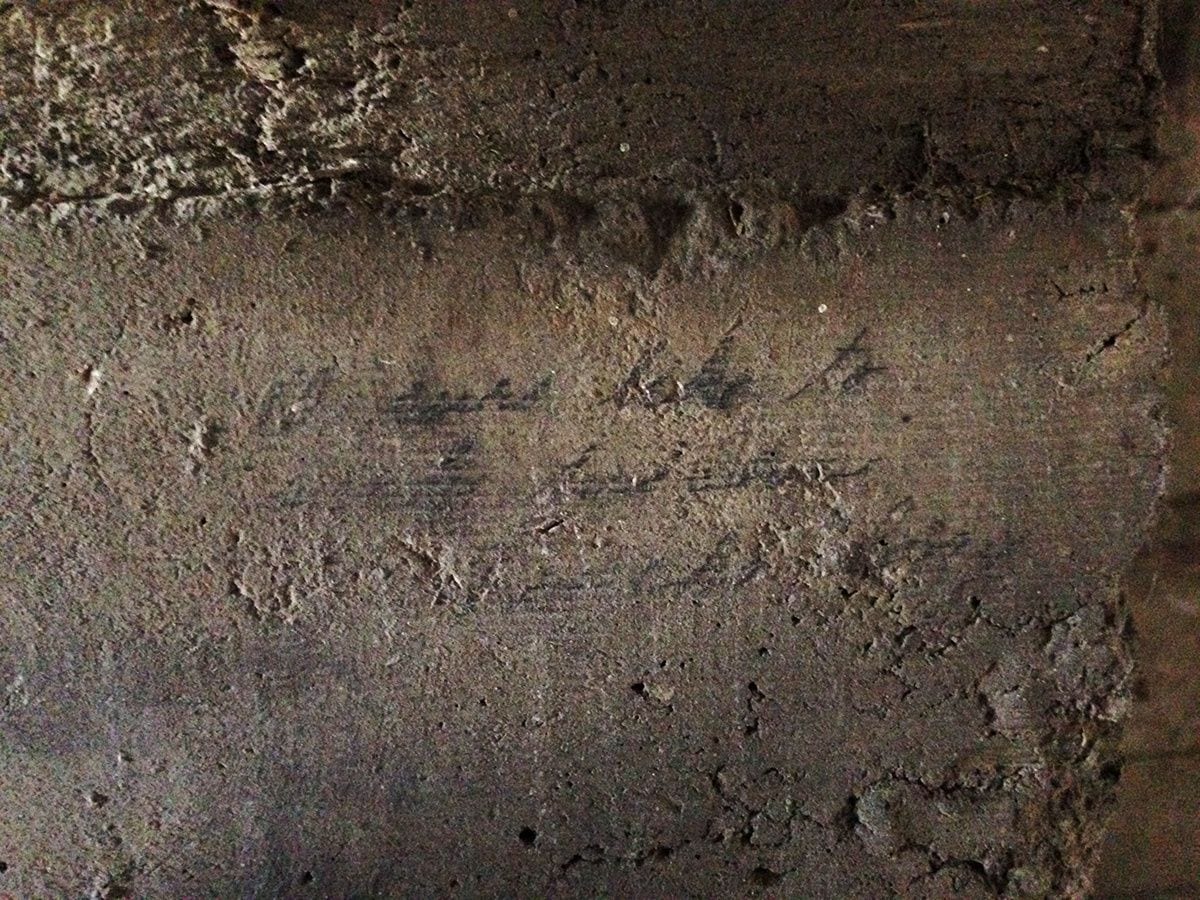
That I stray occasionally from the boundaries of Los Angeles should come as no surprise. Pasadena makes an appearance, as do Long Beach, Santa Monica, Chatsworth, and Malibu. Failing to trespass the lines around a city makes little sense when those lines are constructs, and when everyday activities, including writing graffiti, routinely move beyond them. Rich communities of practice at the harbor, for example, bridge Los Angeles and Long Beach. The technical authorities for these places are separate, but they act as combined ports. The watershed similarly has multiple agencies governing it and needs to be taken on its own terms.
Graffiti research is an odd invasion of privacy, a strange form of public meets private. I traced what I could of full names under bridges or in tunnels. Through census data, I often discovered where people had lived, who they were living with, what their house was worth, who their neighbors and siblings were, what their fathers did for a living. I could see whether people lived in rooming houses or with families and whether they had radios. Sometimes, I was able to locate people’s descendants and had many productive conversations as a result. I celebrated connections when I could: talking to Sandy Buckham, now deceased, a relative of A-No. 1; viewing older images with Sally and Jerry Romotsky, who studied graffiti in the 1970s; listening to Ralph Lopez-Urbina, longtime friend and 1940s graffiti writer; looking at pictures with Chaz Bojórquez, whose success as an artist began on the streets of Northeast L.A. in 1969. I’ve been able to hang out with union members and visit places usually off-limits: military bunkers, soundstage catwalks, the harbor. I have explored tunnels and other illicit areas of the city by myself or with family and close friends.
The treatment of graffiti I offer in this book is likely to rankle some readers, particularly those who hate graffiti. I have no desire to control people’s positive or negative feelings about graffiti. As a scholar and photographer, I have found something different in the medium: a unique window into social history that points to multiple theoretical and topical questions. While graffiti in the moment can cause public outcry, give it fifty years, and it becomes interesting. Give it a hundred, or a thousand, and it’s a rare direct link to the past.
In addition to my own photography, I was fortunate to obtain two sets of archival images in the 1990s that stand in stark contrast to one another. The first, the Lomas and Weltman Collection, approximates my own style, uneven photographic quality, and far-reaching content, and it has a tendency toward chaos. It includes impulses toward order but is scattered in its own layering. Curated by early graffiti researchers Ben Lomas and Gershon Weltman, the collection spans a ten-year period, from 1965 to 1975, and includes materials and media covering a wider range of graffiti than the second archive. Narrowed to the year 1974, the second collection, comprising photographs by Leonard Nadel, comes in a more orderly package. It combines something of the ethnographer’s sensibility, the archaeologist’s discipline, and the photographer’s aesthetic. The quality of photography, color, and composition demonstrate sensitivity, infused with a feeling of Nadel walking the street, and with an almost single-minded emphasis on Chicano barrio writing.
I write about these two archives because they have been left in my care, and they are for me to introduce to the public. Their impact on my understanding of the graffiti medium and the city has been profound. Though I occasionally pull images into specific sections, I spend most of my time in chapter 9 with Lomas and Weltman’s temporal content clusters, and in chapter 11 with Nadel’s disciplined aesthetic.
In the late 1990s and early 2000s, I used to go on graffiti adventures with three companions: artist Chaz Bojórquez, collector Tommy Marron, and journalist Ben Higa. We went all over L.A. in search of historic writing. Together, we discovered the 1914 hobo graffiti that is the subject of chapter 1. We explored deep into and under the city’s infrastructure. In the 1970s, my husband Erik was taken with Chaz’s original Mr. Lucky stencil on the spiral between the 110 Freeway and Interstate 5. Chaz put it up in 1969, and it stayed until the 1984 Olympics. A few years before we met Chaz in person, Erik and I began to explore under the bridges of L.A. We found our first early gang mark—from 1931 claiming the Happy Valley neighborhood, on the west side of the Spring Street Bridge. We found gang writings rendered in railroad tar from the late 1940s under the Spring Street and Olympic Boulevard Bridges, as well as railroad union graffiti from the 1950s under the Fourth Street Bridge. Tommy, Ben, Chaz, and I formed another team that eventually went not only under bridges but also under the city itself.
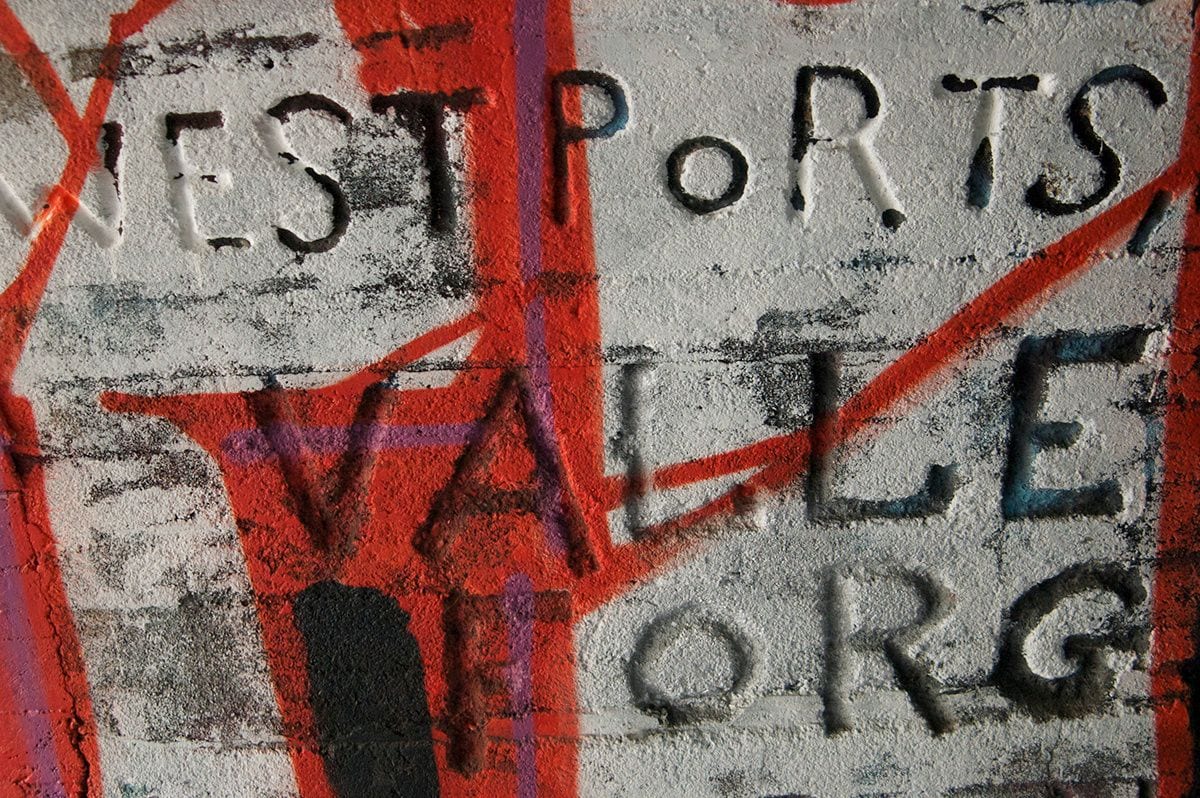
Ben, in a moment of trust, showed me JK’s tunnel. I had seen some of JK’s other work in the area—carvings as strange as those in his tunnel, if not as prolific. The tunnel was magic. No one knew a thing about the carver. Ben was obsessed with him.
People always have lived in JK’s tunnel. They are still there, on and off, and the tunnel remains an active spot for writing and living. It’s a devilishly tricky place to document. In 2014, I returned to the site with photographer Brian Joseph, whose images appear throughout this chapter. Then in 2016, with the assistance of L.A. history buffs Kim Cooper and Richard Schave, photographer Craig Sauer was able to produce a 3-D rendering of it.16 Empowered to scrutinize each carved word in the tunnel for the first time, I found that JK was from Connecticut, that his repetitions of Kon and Kal stood for Connecticut and California, and that his name might have been John Cap. Insufficient knowledge is reassuring: even writing in concrete remains elusive. JK’s carvings have withstood the city’s miles of whitewash along the L.A. River. Today, it’s the city that has the mania: continual draping of white paint on walls. It has worked. The area is now primed for river-based redevelopment projects.
Despite these changes, Los Angeles remains rich with writing. The global florescence of street art is saturating L.A. streets. People without houses are building encampments in new places—in front of churches, on the sides of freeways, under bridges. Some have gone back to the old stems in downtown or at river bottom. Though the River’s concrete banks are now bare, graffiti and the people who produce it endure through time and place.
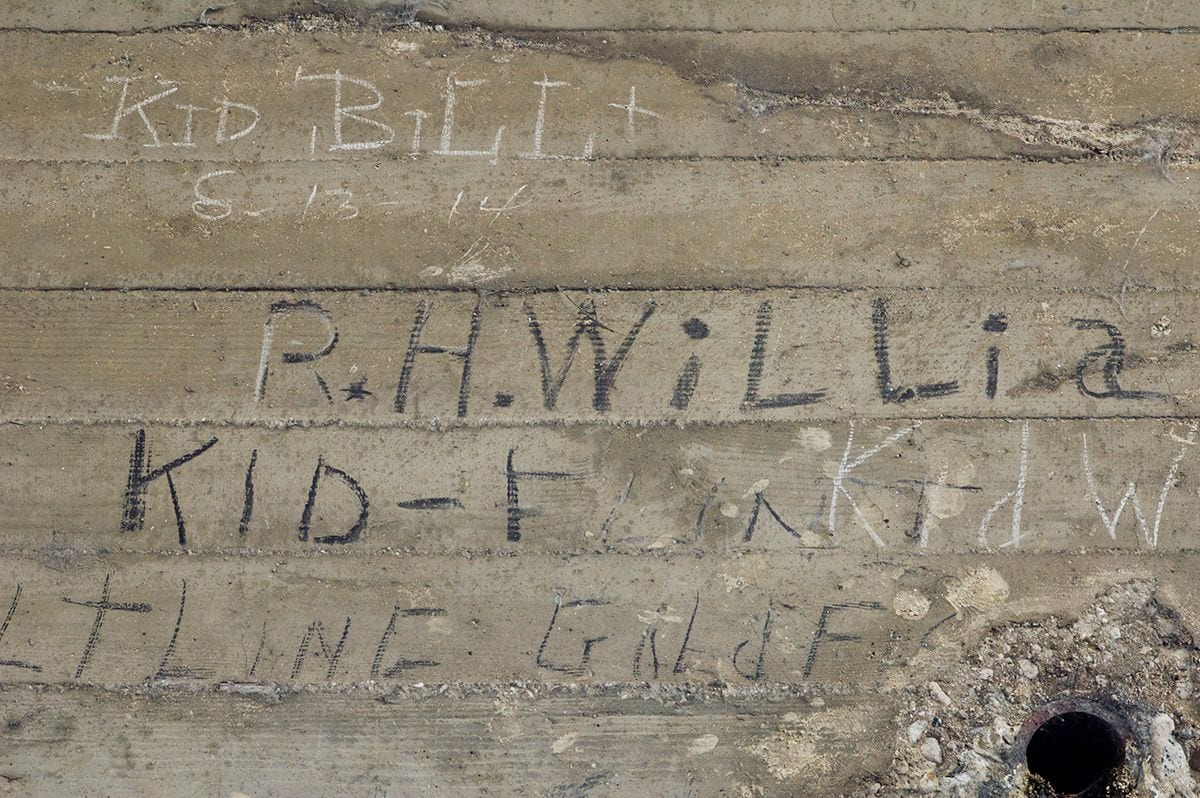
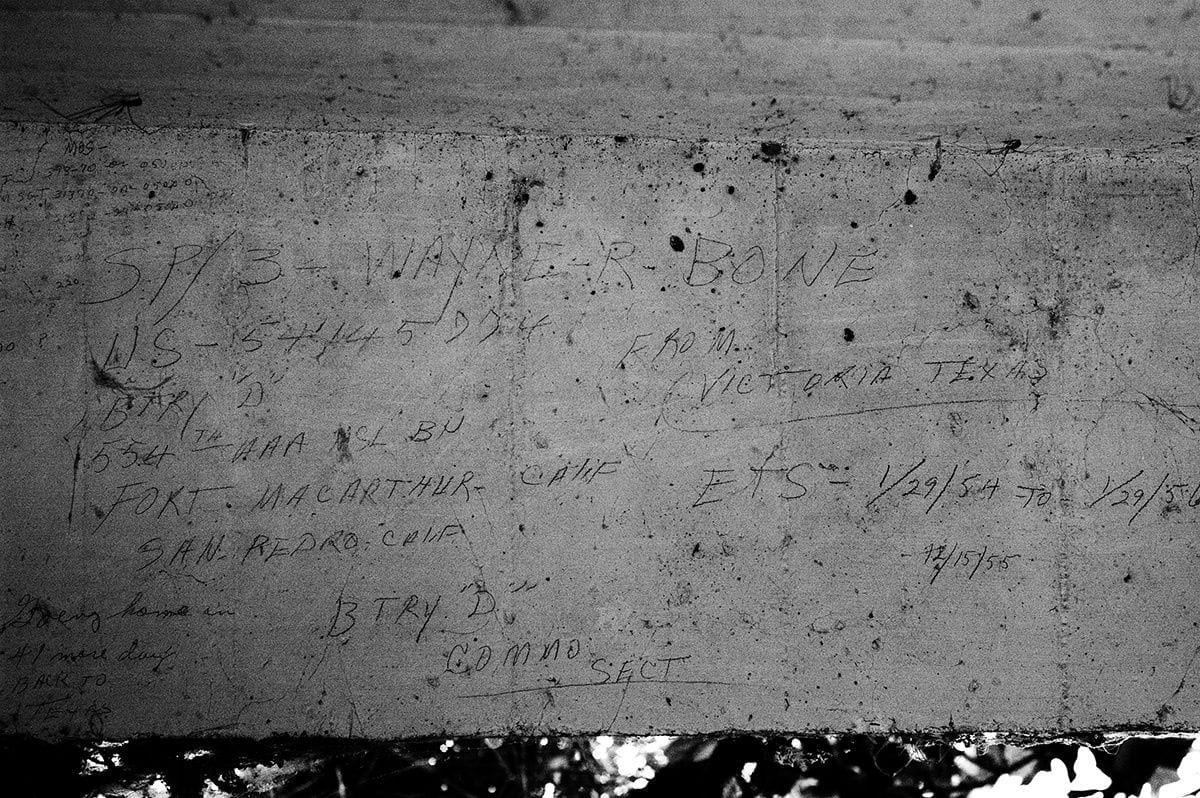

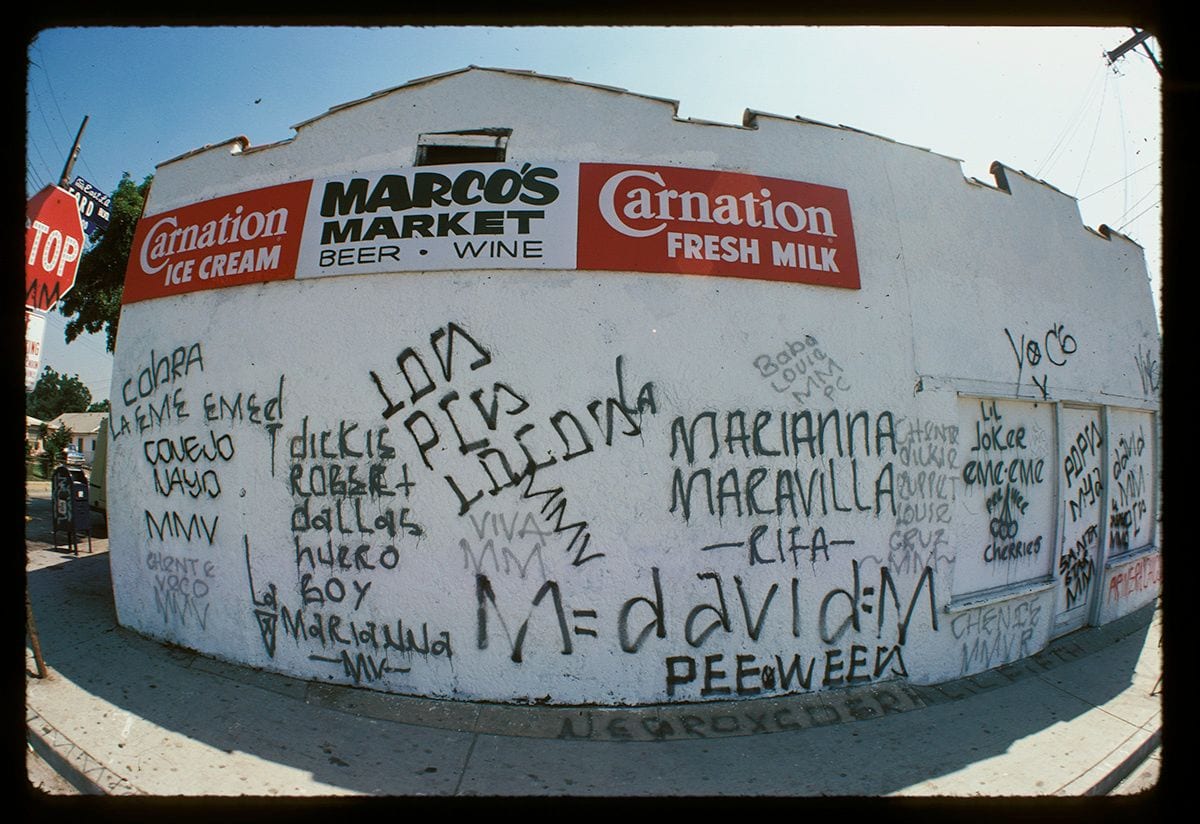
—
Susan A. Phillips is professor of environmental analysis at Pitzer College. She is the author of Wallbangin’: Graffiti and Gangs in L.A. (1999) and Operation Fly Trap: Gangs, Drugs, and Law (2012).

